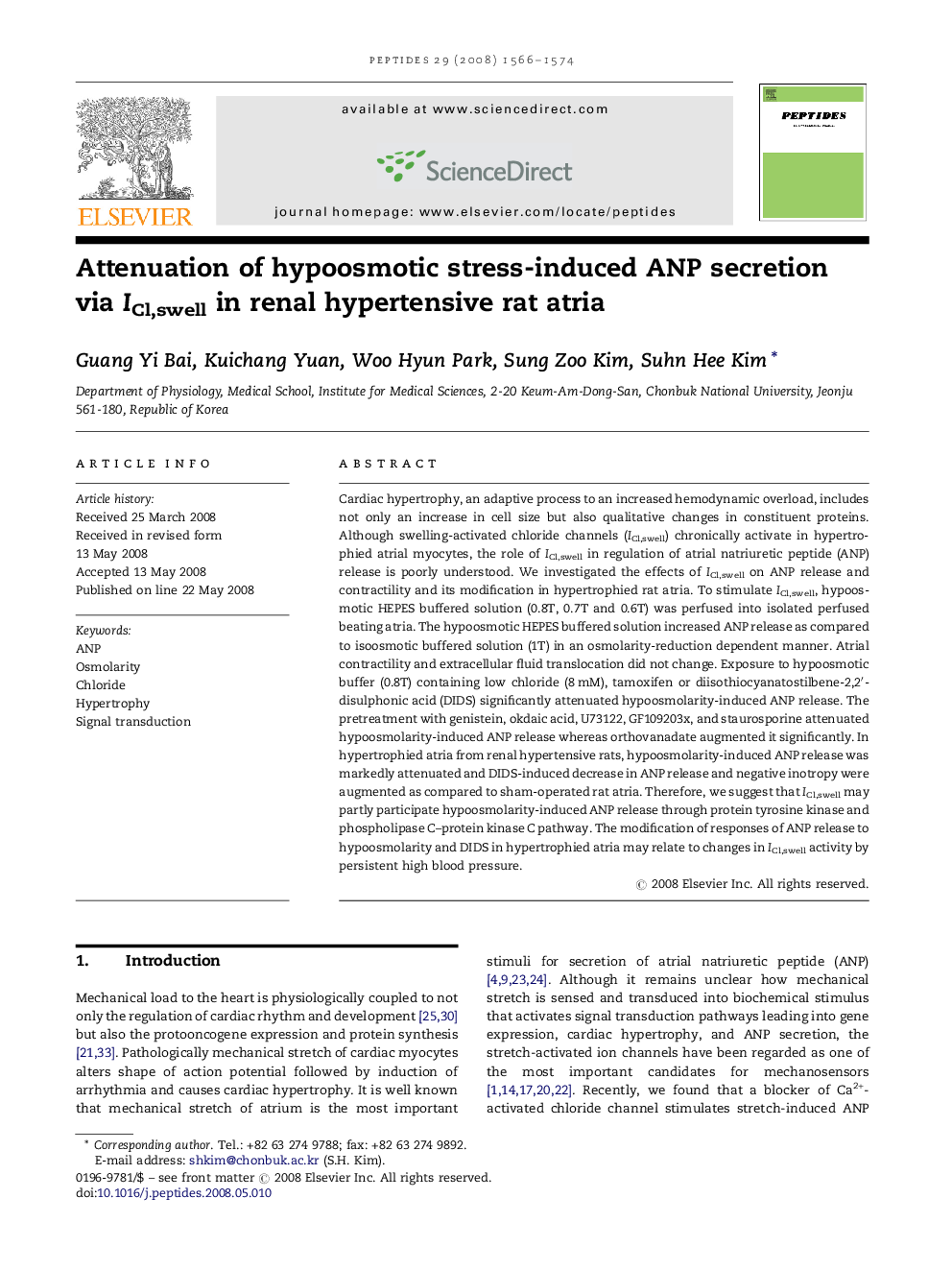| Article ID | Journal | Published Year | Pages | File Type |
|---|---|---|---|---|
| 2008273 | Peptides | 2008 | 9 Pages |
Abstract
Cardiac hypertrophy, an adaptive process to an increased hemodynamic overload, includes not only an increase in cell size but also qualitative changes in constituent proteins. Although swelling-activated chloride channels (ICl,swell) chronically activate in hypertrophied atrial myocytes, the role of ICl,swell in regulation of atrial natriuretic peptide (ANP) release is poorly understood. We investigated the effects of ICl,swell on ANP release and contractility and its modification in hypertrophied rat atria. To stimulate ICl,swell, hypoosmotic HEPES buffered solution (0.8T, 0.7T and 0.6T) was perfused into isolated perfused beating atria. The hypoosmotic HEPES buffered solution increased ANP release as compared to isoosmotic buffered solution (1T) in an osmolarity-reduction dependent manner. Atrial contractility and extracellular fluid translocation did not change. Exposure to hypoosmotic buffer (0.8T) containing low chloride (8Â mM), tamoxifen or diisothiocyanatostilbene-2,2â²-disulphonic acid (DIDS) significantly attenuated hypoosmolarity-induced ANP release. The pretreatment with genistein, okdaic acid, U73122, GF109203x, and staurosporine attenuated hypoosmolarity-induced ANP release whereas orthovanadate augmented it significantly. In hypertrophied atria from renal hypertensive rats, hypoosmolarity-induced ANP release was markedly attenuated and DIDS-induced decrease in ANP release and negative inotropy were augmented as compared to sham-operated rat atria. Therefore, we suggest that ICl,swell may partly participate hypoosmolarity-induced ANP release through protein tyrosine kinase and phospholipase C-protein kinase C pathway. The modification of responses of ANP release to hypoosmolarity and DIDS in hypertrophied atria may relate to changes in ICl,swell activity by persistent high blood pressure.
Related Topics
Life Sciences
Biochemistry, Genetics and Molecular Biology
Biochemistry
Authors
Guang Yi Bai, Kuichang Yuan, Woo Hyun Park, Sung Zoo Kim, Suhn Hee Kim,
